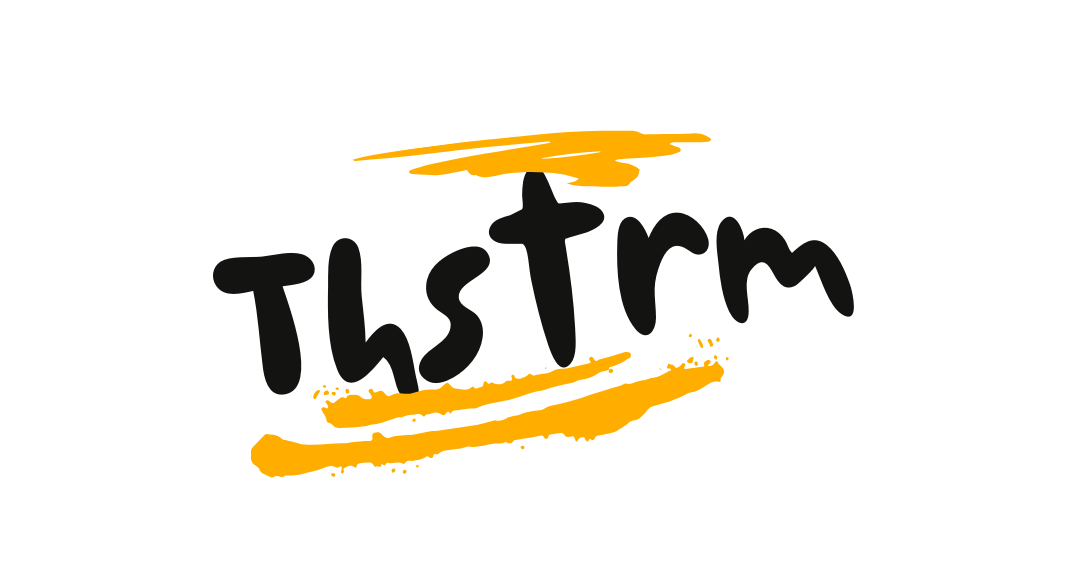How Non-Monogamous Relationships Are Transforming The Modern Dating Scene
May 10, 2025
Shifting Societal Norms
The landscape of modern dating is undergoing a significant transformation, driven in part by evolving societal norms and attitudes towards relationships. One notable shift is the increasing acceptance and visibility of non-monogamous relationship styles.
Deconstructing Traditional Expectations
Once considered taboo or fringe behavior, non-monogamy—which encompasses various relationship structures beyond traditional monogamy—is steadily gaining mainstream recognition. This rise in visibility stems from a growing societal shift away from rigid expectations about love and commitment. Factors contributing to this change include increased awareness of diverse relationship models through media representation, open conversations about sexual ethics and personal autonomy, and the desire for more authentic and fulfilling relationships.
As societal norms evolve, non-monogamy is no longer confined to niche communities. More people are exploring alternative relationship structures as a means of fostering greater honesty, communication, and emotional intimacy.
Embracing Authenticity and Open Communication
This shift towards openness extends beyond the realm of romantic relationships. Open communication has become increasingly valued in all aspects of life, leading to a greater willingness to discuss personal values and desires honestly.
In the context of dating, this means individuals are more likely to express their relationship preferences upfront, whether they lean towards monogamy, polyamory, or other non-monogamous arrangements. This transparency allows for more meaningful connections based on shared values and expectations.
The Rise of Polyamory and Ethical Non-Monogamy
Once considered taboo or fringe behavior, non-monogamy—which encompasses various relationship structures beyond traditional monogamy—is steadily gaining mainstream recognition. This rise in visibility stems from a growing societal shift away from rigid expectations about love and commitment. Factors contributing to this change include increased awareness of diverse relationship models through media representation, open conversations about sexual ethics and personal autonomy, and the desire for more authentic and fulfilling relationships.
Understanding Different Relationship Models
The landscape of modern dating is undergoing a significant transformation, driven in part by evolving societal norms and attitudes towards relationships. One notable shift is the increasing acceptance and visibility of non-monogamous relationship styles.
Once considered taboo or fringe behavior, non-monogamy—which encompasses various relationship structures beyond traditional monogamy—is steadily gaining mainstream recognition. This rise in visibility stems from a growing societal shift away from rigid expectations about love and commitment. Factors contributing to this change include increased awareness of diverse relationship models through media representation, open conversations about sexual ethics and personal autonomy, and the desire for more authentic and fulfilling relationships.
As societal norms evolve, non-monogamy is no longer confined to niche communities. More people are exploring alternative relationship structures as a means of fostering greater honesty, communication, and emotional intimacy.
This shift towards openness extends beyond the realm of romantic relationships. Open communication has become increasingly valued in all aspects of life, leading to a greater willingness to discuss personal values and desires honestly.
In the context of dating, this means individuals are more likely to express their relationship preferences upfront, whether they lean towards monogamy, polyamory, or other non-monogamous arrangements. This transparency allows for more meaningful connections based on shared values and expectations.
Building Consent and Transparency
The rise of polyamory and ethical non-monogamy is transforming the modern dating scene. It is no longer considered taboo as society evolves and embraces diverse relationship models.
This shift can be attributed to several factors, including increased media representation of different relationship styles, open discussions about sexual ethics and personal autonomy, and a desire for more authentic connections.
As a result, individuals are more comfortable exploring alternative relationship structures such as polyamory, where multiple loving relationships are consensually practiced.
Open communication is increasingly valued, encouraging individuals to express their relationship preferences upfront, whether they prefer monogamy or non-monogamous arrangements.
This transparency fosters meaningful connections based on shared values and expectations, leading to more honest and fulfilling relationships.
Navigating Jealousy and Emotional Complexity
The rise of polyamory and ethical non-monogamy is transforming the modern dating scene. It is no longer considered taboo as society evolves and embraces diverse relationship models.
This shift can be attributed to several factors, including increased media representation of different relationship styles, open discussions about sexual ethics and personal autonomy, and a desire for more authentic connections.
As a result, individuals are more comfortable exploring alternative relationship structures such as polyamory, where multiple loving relationships are consensually practiced.
Open communication is increasingly valued, encouraging individuals to express their relationship preferences upfront, whether they prefer monogamy or non-monogamous arrangements. This transparency fosters meaningful connections based on shared values and expectations, leading to more honest and fulfilling relationships.
Navigating jealousy and emotional complexity is crucial in these non-traditional relationship styles.
Individuals in polyamorous relationships need to develop strong communication skills, establish clear boundaries, and cultivate emotional intelligence to manage the potential for jealousy, insecurity, and other complex emotions that may arise.
Open and honest conversations about feelings, needs, and expectations are essential for building trust and fostering a sense of security within the relationship structure. Regular check-ins, both as individuals and as a collective, can help ensure that everyone’s needs are being met and that boundaries are respected.
Remember, ethical non-monogamy requires ongoing effort, communication, and commitment from all parties involved.
Practical Considerations for Non-Monogamous Relationships
While the modern dating scene is embracing a wider range of relationship models, navigating non-monogamous relationships requires careful consideration. Practical aspects such as communication, boundary setting, emotional management, and time allocation need to be thoughtfully addressed to ensure healthy and fulfilling connections.
Communication and Time Management Strategies

Effective communication is the cornerstone of any successful relationship, but it’s especially crucial in non-monogamous structures. Open and honest dialogue about feelings, needs, desires, and boundaries is essential for fostering trust, preventing misunderstandings, and navigating potential jealousy or insecurity. Regular check-ins, both as individuals and as a collective, can help ensure everyone feels heard, understood, and secure.
Time management becomes a critical skill in non-monogamous relationships. Individuals must learn to balance time commitments across multiple partners and personal pursuits. Prioritizing activities, establishing clear schedules, and communicating openly about availability are essential for ensuring everyone’s needs are met without creating resentment or feelings of neglect.
Clearly defining boundaries is another vital aspect. Each partner should articulate their comfort levels regarding communication with other partners, physical intimacy, emotional involvement, and expectations around exclusivity. These boundaries should be revisited and renegotiated as relationships evolve to ensure everyone feels respected and safe.
Setting Boundaries and Expectations
Practical considerations are essential for navigating the complexities of non-monogamous relationships. Effective communication is paramount, requiring open and honest discussions about feelings, needs, desires, and boundaries. Regular check-ins, both individually and collectively, help ensure everyone feels heard, understood, and secure.
Time management becomes crucial in balancing commitments across multiple partners and personal pursuits. Prioritizing activities, establishing clear schedules, and communicating openly about availability are essential for meeting everyone’s needs without resentment or neglect.
Clearly defining boundaries is another vital aspect. Each partner should articulate their comfort levels regarding communication with other partners, physical intimacy, emotional involvement, and expectations around exclusivity. These boundaries should be revisited and renegotiated as relationships evolve to ensure mutual respect and safety.
Balancing Multiple Relationships Responsibly
Effective communication is the cornerstone of any successful relationship, but it’s especially crucial in non-monogamous structures. Open and honest dialogue about feelings, needs, desires, and boundaries is essential for fostering trust, preventing misunderstandings, and navigating potential jealousy or insecurity. Regular check-ins, both as individuals and as a collective, can help ensure everyone feels heard, understood, and secure.
Time management becomes a critical skill in non-monogamous relationships. Individuals must learn to balance time commitments across multiple partners and personal pursuits. Prioritizing activities, establishing clear schedules, and communicating openly about availability are essential for ensuring everyone’s needs are met without creating resentment or feelings of neglect.
Clearly defining boundaries is another vital aspect. Each partner should articulate their comfort levels regarding communication with other partners, physical intimacy, emotional involvement, and expectations around exclusivity. These boundaries should be revisited and renegotiated as relationships evolve to ensure everyone feels respected and safe.
Challenges and Misconceptions
The modern dating scene is evolving rapidly, challenged by shifting societal norms and a growing openness to diverse relationship models. Non-monogamy, once considered taboo, is gaining mainstream recognition as individuals seek more authentic and fulfilling connections.
Stigma and Social Prejudice
Navigating the complexities of non-monogamous relationships requires addressing challenges and misconceptions head-on. One significant hurdle is the persistent stigma associated with alternative relationship structures. Societal conditioning often leads to judgments and misunderstandings, portraying non-monogamy as promiscuity or infidelity.
This stigma can lead to social prejudice and discrimination against individuals who choose non-monogamous relationships. They may face ostracism from friends and family, be subjected to negative stereotypes, or experience difficulty finding acceptance in certain social circles.
Overcoming these challenges requires promoting education and open dialogue about ethical non-monogamy. Raising awareness about the diversity of relationship models and fostering understanding through honest conversations can help dispel harmful myths and reduce prejudice.
Additionally, creating supportive communities and safe spaces where individuals can connect with others who share similar relationship philosophies is crucial for building a more inclusive and accepting society.
Legal and Practical Issues
One of the key challenges facing non-monogamous relationships is navigating legal and practical issues.
Traditional legal frameworks often assume a monogamous structure, leaving individuals in non-monogamous relationships vulnerable to complexities regarding inheritance, property division, healthcare decision-making, and parental rights.
For example, if an unmarried couple in a polyamorous relationship faces a medical emergency, it might be difficult to establish legal decision-making authority or access necessary information without formal recognition of their relationship structure.
Similarly, inheritance laws may not adequately protect the rights and interests of all partners in a non-monogamous arrangement.
Advocacy efforts are underway to address these legal disparities and ensure that individuals in non-monogamous relationships have equal protection under the law.
Another practical challenge lies in addressing social stigma and cultural biases. Non-monogamy often faces misconceptions and prejudice, leading to feelings of isolation or judgment from friends, family, and society at large.
Overcoming these challenges requires promoting education, open dialogue, and a greater understanding of the diversity of relationship models.
Managing Public Perception
Navigating the complexities of non-monogamous relationships presents unique challenges that require thoughtful consideration.
One significant hurdle is societal stigma. Non-monogamy often faces misconceptions and prejudice, leading to judgment and misunderstanding from those who are unfamiliar with alternative relationship structures. This can result in social isolation, strained family relationships, and difficulty finding acceptance within certain communities. Addressing this challenge requires promoting education and fostering open conversations about ethical non-monogamy to dispel harmful stereotypes and cultivate greater understanding.
Another key challenge is managing the emotional complexities inherent in non-monogamous relationships. Jealousy, insecurity, and feelings of inadequacy can arise as individuals navigate multiple connections. Open and honest communication is crucial for addressing these emotions, establishing clear boundaries, and ensuring all partners feel respected and secure.
Practical considerations also play a vital role. Time management becomes essential for balancing commitments across multiple partners and personal pursuits. Clear communication about availability and expectations around shared time is crucial.
Additionally, defining and renegotiating boundaries regarding communication, physical intimacy, emotional involvement, and exclusivity is essential for fostering healthy and fulfilling connections within the framework of non-monogamy.

Lastly, navigating legal and social complexities can pose significant hurdles. Traditional legal frameworks often assume a monogamous structure, leaving individuals in non-monogamous relationships vulnerable to complications regarding inheritance, property division, healthcare decision-making, and parental rights. Advocating for legal recognition and protection of non-monogamous relationships is crucial to ensure equal rights and support for all individuals regardless of their relationship model.
The Future of Dating
The landscape of modern dating is undergoing a significant transformation, driven in part by evolving societal norms and attitudes towards relationships. One notable shift is the increasing acceptance and visibility of non-monogamous relationship styles.
Once considered taboo or fringe behavior, non-monogamy—which encompasses various relationship structures beyond traditional monogamy—is steadily gaining mainstream recognition. This rise in visibility stems from a growing societal shift away from rigid expectations about love and commitment. Factors contributing to this change include increased awareness of diverse relationship models through media representation, open conversations about sexual ethics and personal autonomy, and the desire for more authentic and fulfilling relationships.
Increased Acceptance and Visibility
The modern dating scene is embracing a wider range of relationship models, with non-monogamy taking center stage. This shift signifies a departure from traditional monogamous norms, reflecting evolving societal attitudes and a growing emphasis on personal autonomy and authenticity in relationships.
This increased acceptance stems from several factors: growing media representation of diverse relationship styles, open discussions about sexual ethics and personal boundaries, and a desire for more fulfilling connections that align with individual values and desires.
As a result, individuals are increasingly comfortable exploring alternative relationship structures like polyamory, where multiple loving relationships are consensually practiced.
This shift towards openness extends beyond romantic relationships, fostering transparency and honest communication in all aspects of life.
In the realm of dating, this means people are more likely to express their relationship preferences upfront, whether they lean toward monogamy or non-monogamous arrangements. This transparency allows for more meaningful connections built on shared values and expectations.
Evolving Relationship Models
The future of dating is evolving rapidly, driven by a growing acceptance of diverse relationship models. One significant trend is the increasing visibility and legitimacy of non-monogamous relationships, which encompass various structures beyond traditional monogamy.
This shift is fueled by several factors:
* **Changing Societal Norms:** Rigid expectations around love and commitment are being challenged as individuals seek more authentic and fulfilling connections that align with their values.
* **Increased Media Representation:** Portrayals of non-monogamous relationships in popular media have helped normalize these relationship styles and reduce stigma.
* **Open Conversations About Sexuality:** Discussions about sexual ethics and personal autonomy have created a space for greater openness and acceptance of diverse relationship choices.
As a result, more people are exploring non-monogamy, including polyamory, where individuals have multiple loving relationships with the knowledge and consent of all partners. This trend signifies a movement towards greater honesty and transparency in dating, as individuals feel more comfortable expressing their relationship preferences upfront.
While embracing this evolution is important, navigating non-monogamous relationships requires careful consideration:
* **Effective Communication:** Open and honest dialogue about feelings, needs, boundaries, and expectations is crucial for building trust and preventing misunderstandings.
* **Time Management:** Balancing commitments across multiple partners and personal pursuits requires effective planning and clear communication about availability.
* **Boundary Setting:** Each partner should clearly define their comfort levels regarding various aspects of the relationship, such as communication with other partners, physical intimacy, and emotional involvement.
Addressing practical challenges like legal recognition and social stigma is also essential for creating a more inclusive environment that supports all relationship models.
Ultimately, the future of dating lies in fostering respect, understanding, and acceptance of diverse relationship styles. By embracing open communication and challenging societal norms, we can create a more equitable and fulfilling landscape for all individuals seeking love and connection.
Embracing Diversity in Love and Intimacy
The modern dating scene is evolving rapidly, challenged by shifting societal norms and a growing openness to diverse relationship models. Non-monogamy, once considered taboo, is gaining mainstream recognition as individuals seek more authentic and fulfilling connections.
- Open communication is increasingly valued, encouraging individuals to express their relationship preferences upfront, whether they prefer monogamy or non-monogamous arrangements. This transparency fosters meaningful connections based on shared values and expectations, leading to more honest and fulfilling relationships.
- The rise of polyamory and ethical non-monogamy is transforming the modern dating scene. It is no longer considered taboo as society evolves and embraces diverse relationship models.
- This shift can be attributed to several factors, including increased media representation of different relationship styles, open discussions about sexual ethics and personal autonomy, and a desire for more authentic connections.
As a result, individuals are more comfortable exploring alternative relationship structures such as polyamory, where multiple loving relationships are consensually practiced.
Navigating jealousy and emotional complexity is crucial in these non-traditional relationship styles. Individuals in polyamorous relationships need to develop strong communication skills, establish clear boundaries, and cultivate emotional intelligence to manage the potential for jealousy, insecurity, and other complex emotions that may arise.
sex toys for women
Line the Studio
Glitter Cottage
- Polynucleotides Injectables Near Alfold, Surrey - November 2, 2025
- Obagi Blue Peel Radiance Peel Near Ockley, Surrey - November 1, 2025
- Obagi Blue Peel Radiance Peel Near Camberley, Surrey - October 31, 2025
